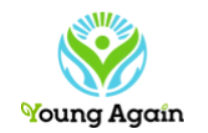
Hormesis — Why a Little Bit of Stress Might Be the Key to Longevity
Share
Not all stress is harmful. In small, controlled doses, stress can trigger powerful repair mechanisms that help you age better. This concept is called hormesis—and it matters even more after 50.
“Hormesis is like resistance training for your cells—brief challenge, followed by adaptation and growth.”
What Hormesis Does Inside the Body
Short, intermittent stressors stimulate cellular clean-up and repair. Mechanisms include:
- Autophagy: Removing damaged proteins and organelles
- Mitochondrial biogenesis: Building new, efficient “power plants”
- Heat shock proteins & antioxidant enzymes: Protecting cells from damage
- SIRT/AMPK activation: Longevity pathways linked to metabolic health
Everyday Hormetic Tools (Gentle Starts for 50+)
- Intermittent fasting: Start with 12–14 hours overnight, 2–4 days/week (medical guidance if on glucose/thyroid meds).
- Heat: Sauna or hot bath 10–15 minutes, 2–3x/week.
- Cold: 30–60 seconds of cool water after a warm shower; build gradually.
- HIIT (low impact): 6–10 short intervals on a bike or hill walk, 1–2x/week.
- Polyphenols: Turmeric, green tea, berries—and targeted supplementation.
Support the Recovery Window
Hormesis works because you recover from the challenge. Nutritional allies can help you adapt without burnout:
- Young Again Curcumin: Promotes antioxidant defenses and autophagy; complements fasting, heat, or exercise.
Safety & Progression
Start low, go slow. If you experience dizziness, excessive fatigue, sleep disruption, or mood changes, reduce intensity or frequency. Speak with your clinician if you have cardiovascular disease, uncontrolled blood pressure, or are on prescription medications.
References
- Ristow, M., & Zarse, K. (2010). How increased oxidative stress promotes longevity. Biochimica et Biophysica Acta, 1797(6–7), 1178–1186.
- Horne, B. D., et al. (2018). Sauna bathing and cardiovascular disease. Mayo Clinic Proceedings, 93(8), 1117–1141.
- Seals, D. R., et al. (2019). Habitual aerobic exercise and vascular aging. J Appl Physiol, 127(5), 1407–1419.

